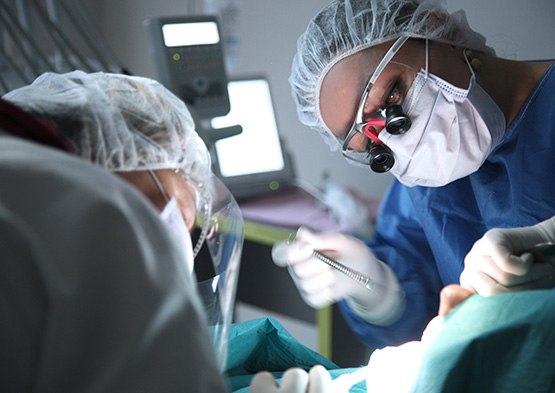Advanced Platelet Rich Fibrin (APRF) – Farmington
Promote Quick, Efficient Healing
Did you know that your blood can be used to promote healing and tissue regeneration after dental procedures? If you need to undergo an extraction, are getting a dental implant, or have periodontal surgery coming up, your periodontist may recommend using your own platelet-rich fibrin to speed up the healing process and promote the reformation of your bone tissue. Continue reading to learn more about this process and its benefits.
What Is APRF?

APRF is a tissue engineering concept that produces platelet-rich fibrin without anticoagulants. Ultimately, is used to stimulate cell growth and bone regeneration. This process can be used for a wide range of dental procedures, including:
- Bone grafting
- Tissue grafting
- Sinus grafting
- Dental implant placement
The APRF Process

The entire APRF process can be completed in about 15 minutes with four straightforward steps:
- First, approximately 4-6 vials of blood are drawn from the patient.
- The platelets are separated with the use of a centrifuge.
- Blood is separated into a platelet-rich layer.
- The platelet-rich fibrin can be used for dental procedures.
The Different Types of PRF

There are a few different types of PRFs. Here’s how they work:
- Solid PRF Membrane: This is the most common use of PRF. The solid PRF membrane can be put around dental implants for soft-tissue healing, mixed with bone grafting material, or used in conjunction with traditional membranes for faster healing.
- Liquid PRF: Liquid PRF can be used for periodontal pockets, mixed in with bone grafts, or placed in extraction pockets to promote healing.
- Concentrated PRF: This is very similar to liquid PRF. The difference is that the blood is spun longer to further concentrate the PRF.
The Benefits of APRF

Using APRF offers numerous benefits. Here are some of the most prominent ones:
- Allows for a faster healing time
- Reduces post-op inflammation
- Lessens post-op discomfort
- Increases bone growth and regeneration
- Reduces the need for antibiotics
- Minimizes risk of dry socket





